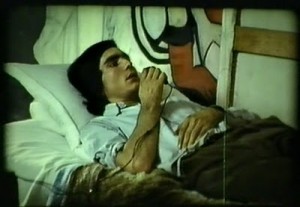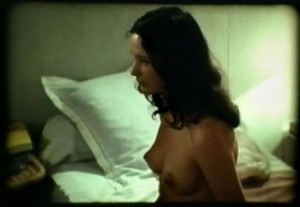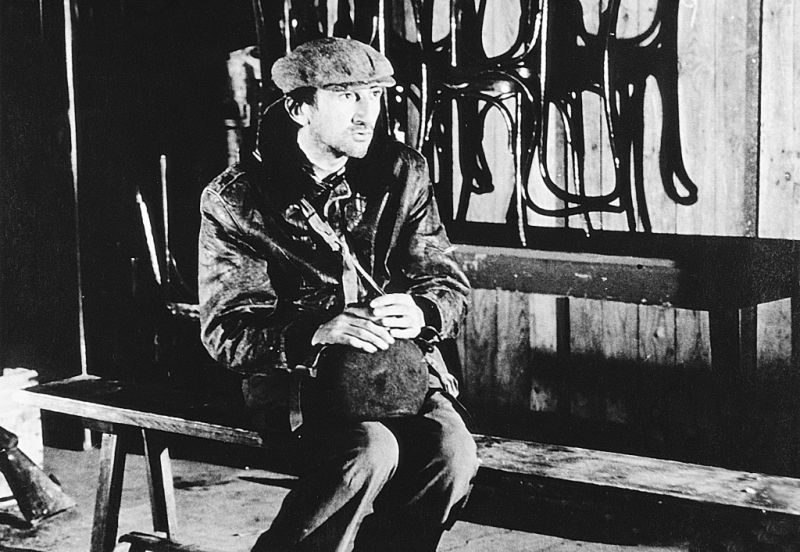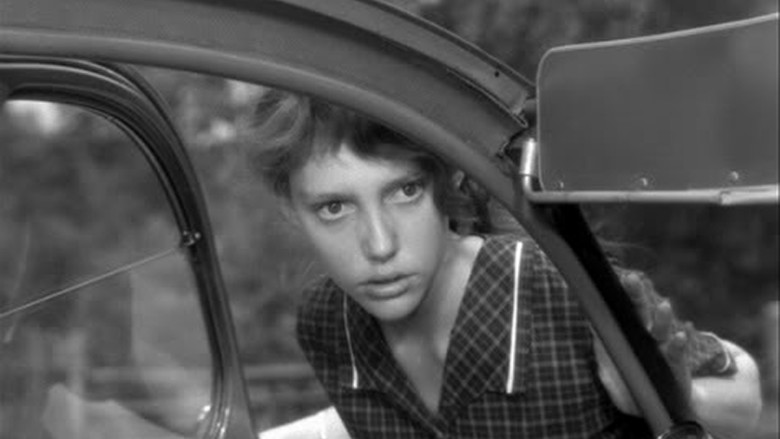From Cineaste (Summer 2010, Vol. XXXV, No. 3). — J.R.
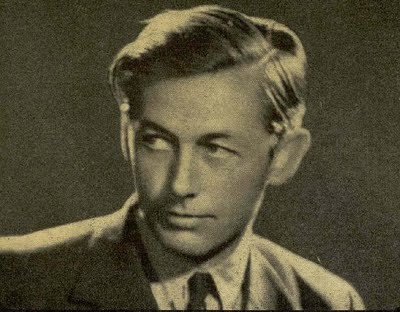
Robert Bresson: A Passion for Film
By Tony Pipolo. New York: Oxford University Press, 2010. 407 pp. Hardcover: $125 and Paperback: $29.95.
“I do not like to show sex crudely on the screen,” Orson Welles declared in a 1964 interview, pursuing an argument that he also made on other occasions. “Not because of morality or puritanism; my objection is of a purely aesthetic order. In my opinion, there are two things that can absolutely not be carried to the screen: the realistic presentation of the sexual act and praying to God. I never believe an actor or actress who pretends to be completely involved in the sexual act if it is too literal, just as I can never believe an actor who wants to make me believe he is praying.”
It’s an argument that frequently comes to mind when I ponder a certain critical impasse that we often face in considering the films of Robert Bresson, largely due to the dearth of biographical information that we have about him. For a filmmaker whose erotic and spiritual preoccupations seem equally pronounced, Bresson frequently poses the conundrum of how we fill in certain psychological blanks in his characters as well as how we describe and understand matters of the flesh as well as the spirit, as we perceive these matters through what he liked to call his cinematography.
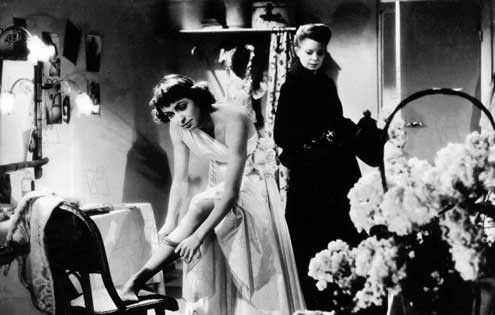
By and large, critics of his work have preferred to concentrate on the spiritual questions, and this is true of Cineaste contributor Tony Pipolo’s ambitious, painstaking, and formidable book on Bresson, which doesn’t so much avoid erotic issues as subsume many of them under issues of spirituality. (In this respect, P. Adams Sitney appears to have exerted a major influence.) One of the personal stumbling blocks I have regarding this issue is an apparent biographical fact about Bresson’s young adulthood that has not appeared very widely (if at all) in print, although it is routinely accepted in private conversations as fact and not as surmise by many knowledgeable, serious, and reputable figures in the French film world I have spoken to, including critics and filmmakers whom I wouldn’t describe as gossip-mongers. Thanks to what might be described as a “don’t ask, don’t tell” policy within French culture regarding some forms of sexual behavior, Bresson’s early career as a gigolo (which related to his work as a professional model) is not just missing from most of the sketchy biographical accounts we have about him; it also goes a long way towards explaining why they remain so sketchy. But this is for me a detail that helps to illuminate much of his work (most obviously, Les Dames du bois de Boulogne) at least as much as his traumatic experience as a POW in a German internment camp during the war or, for that matter, his religious convictions, which we may know even less about — even though critics tend to be less hesitant in holding forth about them, and, contrary to the implication of Welles’ statement, apparently consider these details less intimate and intrusive than those about his sexuality. (One case in point: despite the continuing confidence of some critics in calling Bresson a Jansenist, Bresson himself maintained, in a 1983 interview with Michel Ciment, “To call me a Jansenist or a Calvinist is madness: I’m the opposite of a Jansenist, I’m after impressions.”)
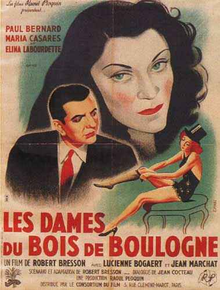
I believe this delicate issue needs to be broached because suppressions of this kind invariably lead to — or at the very least set a precedent for — other suppressions. (Something comparable has happened in misreadings of Dreyer’s films that have stemmed from suppressions of facts in his own biography — especially the recurring misinformation that he had a religious upbringing.) A key instance of this, in Pipolo’s book, is a determination not to regard Les affaires publiques, (1934), Bresson’s uncharacteristic first film, as a significant part of his oeuvre — which even leads Pipolo to conclude his first paragraph by saying “In forty years he made only thirteen films” (which would have of course been correct if he had said “features” instead of “films”), and to assert, repeatedly, that Les Anges du peché is Bresson’s “first film,” restricting virtually all his discussion of this comedy short to an almost invisible footnote to the book’s penultimate chapter. (There Pipolo concedes that he’s seen the film twice, but adds, “It was unavailable to me for any extensive study while I was working on this book,” which presumably exempts him from the need to discuss or acknowledge it further.) Admittedly, what has survived of this film is neither quite complete nor as readily available as Bresson’s other films; Bresson’s widow has herself chosen to omit it from Bresson retrospectives. But I would argue that this zany, satirical romp is quintessentially Bressonian in both its physicality and its anger, and that it even points towards a sense of humor that Pipolo himself is somewhat attentive to, as in his description of Guillaume des Forêts’ lead performance in Four Nights of a Dreamer. So pretending for most of Pipolo’s book that this film doesn’t exist — which I assume was done to simplify some of the main arguments — inevitably leads to some unwarranted assumptions about Bresson’s work as a whole.

As a relatively minor example of the same sort of expedient short-cut, Pipolo states in his Introduction that Bresson “virtually never” used the same actors twice in his films. Had he said “almost never,” I wouldn’t have any cause to object, but leap-frogging over the highly memorable and prominent roles of Jean-Claude Guilbert in both Au hazard Balthazar (1966, as Arnold) and Mouchette (1967, as Arsène) is another matter. (More precisely and typically, Pipolo assigns this exception to a footnote.) It short-changes the richness and complexity of Bresson’s work in almost (not virtually) the same way that Ozu is diminished by critics when they maintain, while minimizing his silent work, that he “almost never” moved his camera. In both cases, the habit of working from a too-purified model threatens to reduce the work itself. (In fact, Guilbert was a key point of contention in Jean-Luc Godard and Michel Delahaye’s celebrated interview with Bresson about Balthazar, when Godard insisted that Arnold registers as a character in an actorly fashion.)
Pipolo’s research has been detailed and yields many pertinent results, although what I find most interesting sometimes deviates from his own concerns. I’m glad he’s read Anne Wiazemsky’s recent and candid non-fiction book, Jeune Fille, about her experience of working with Bresson on Balthazar; but since Bresson and others in that book are identified by name, I don’t see why Pipolo is ready to go along with her (or Gallimard’s) coyness in calling it a “novel”. We learn in yet another footnote that the working title of Les Dames du bois de Boulogne was “Public Opinion”. I assume this was L’Opinion publique, so it’s interesting to consider that this was also the French title of Chaplin’s A Woman of Paris (Chaplin, one recalls, was one of Bresson’s favorite filmmakers) and that it also reflected a possibility of continuity in Bresson’s mind with Affaires publiques. More importantly, when Pipolo tells us that Diary of a Country Priest marked the first time Bresson used nonprofessional actors, the “most notable” of whom was Claude Laydu, I don’t quite know how to square this with his information two paragraphs later that “Laydu came from Belgium to Paris in 1948 to study acting”. And what about the footnoted information in the same paragraph that, even though Laydu “had never made a film before Diary,” he had appeared on stage with Jean-Louis Barrault? Does this mean that Laydu appeared on stage nonprofessionally? Or is Pipolo just trying to squirrel away contradictory information of this kind, in the back of his book?
Even so, and in spite of all my nitpicking, I can’t deny that Pipolo’s book is one of the most careful and thoroughgoing studies of Bresson that we have, adding appreciably to both scholarship about his work and our critical understanding of it. Focusing on a highly selective and speculative biography, spiritual as well as psychoanalytical — the latter drawing on his own professional experience as a psychoanalyst — he usefully summarizes his conclusions in his final paragraph, calling Bresson’s work “a mysterious and evasive cinema that courts faith and doubt in equal measure; a primal cinema in which mother and father figures do more maneuvering backstage than anyone might have suspected; a cruel cinema that celebrates but also frustrates the aspirations of the young and the beautiful; a mad cinema that refuses to normalize the explosive nature of psychic disturbance through naturalistic containment.” If I find Pipolo’s examinations of Bresson’s eight black and white features more rewarding than his chapters on the five in color, this is mainly, I suspect, because I tend to find these earlier films more rewarding as well, but the patience and rigor of his scrutiny persist throughout his study.
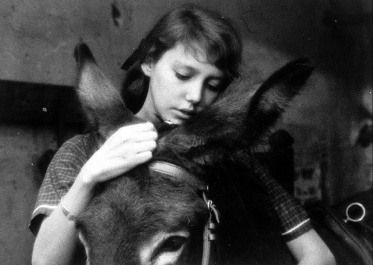
His attentiveness to the literary sources of the film’s narratives is especially detailed and admirable, with helpful accounts of changes made by Bresson in the book that A Man Escaped was derived from as well as the aspects of The Golden Ass and The Idiot that he appropriated and adapted for Au hasard Balthazar. The Trial of Joan of Arc, which Pipolo writes “may be Bresson’s most underrated film,” receives a thoughtful textual and historical analysis that makes me want to reconsider it, and as far as I know he’s the only critic to have confronted both the homoeroticism in Pickpocket and the absence of any script credit in the opening titles, without drawing any oversimplified conclusions about either. He also has plenty to say about the uses of Dostoevsky made in that film as well as in Une femme douce, Four Nights of a Dreamer, and even The Devil, Probably (whose title he traces back to The Brothers Karamazov), not to mention the radical abridgements made to Tolstoy in L’argent.
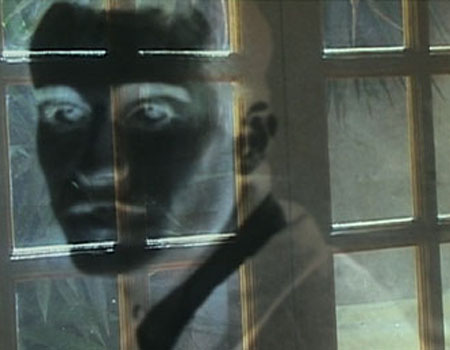
An essentialist who is sometimes misdescribed as a minimalist (even, on occasion, by Pipolo), Bresson is a filmmaker whose works invariably invite spiritual as well as erotic responses, and it isn’t always easy to disentangle these supposedly separate forms of address. I’d never describe Babette Mangolte, whom I’ve known since the 1970s, as a religious person, but her wonderful video documentary Les Modèles de “Pickpocket” nevertheless strikes me as being a religious and even mystical work where even the contemporary living quarters in Mexico City of Martin LaSalle are treated as a sacred site because he once played the title part in Pickpocket. And there are also times when spiritual and material matters become hopelessly confused in some of Bresson’s critics, such as when Paul Schrader once noted, without any apparent trace of irony, that “no artist or style has cornered the transcendental market.”
For the most part, Pipolo seems unencumbered by befuddlements of this kind, but he still has to juggle, like all Bresson critics, with a good many imponderables. Perhaps for this reason, Bresson is a filmmaker who invites multiple perspectives and methodologies, which is why James Quandt’s mammoth critical anthology of 1998 — which counts Pipolo and myself among its many contributors, and which is about to be superseded by a revised second edition — probably remains the best single introductory volume to his work. But when it comes to single book-length studies, Pipolo’s is, despite all my qualms, clearly the best we’ve had so far, in English or in French. — Jonathan Rosenbaum

